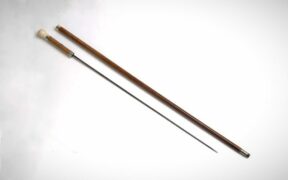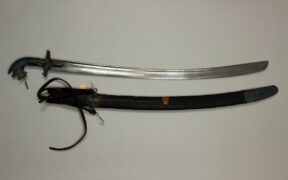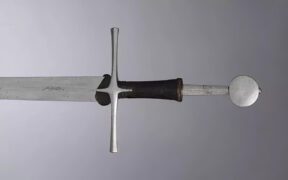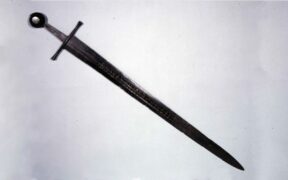Our content features commercial links to our products, committed to transparent, unbiased, and informed editorial recommendations. Learn More
Hunting Sword Legacy: Tracing Its Historical Roots and Distinct Features
NO AI USED This Article has been written and edited by our team with no help of the AI
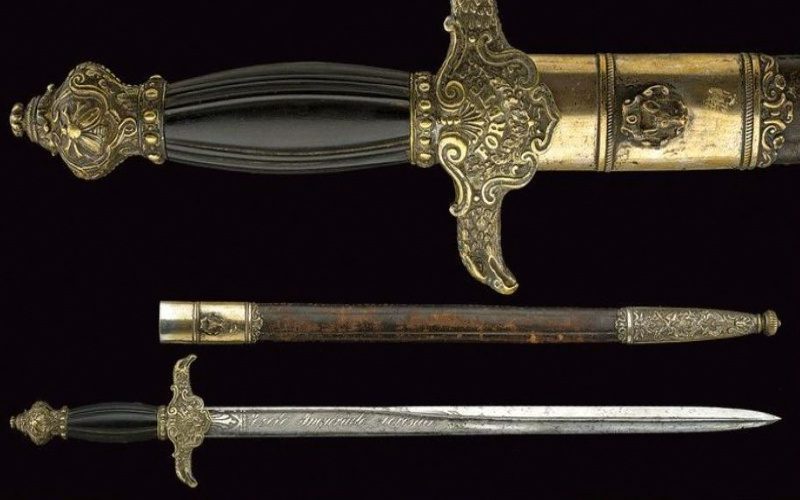
The Hunting Sword is a double-edged shortsword that can trace its origins to medieval Europe but was mostly used throughout the 17th and 19th centuries. It is a sword used for hunting and as a ceremonial and decorative piece as a status symbol.
In this article, we go over the Hunting Sword in its entirety. First, you will learn about its very grand characteristics and how this sword was used in its heyday. Then we shall explain its brief history and answer the question of whether or not you are able to hunt with a sword today.
Characteristics of the Hunting Sword
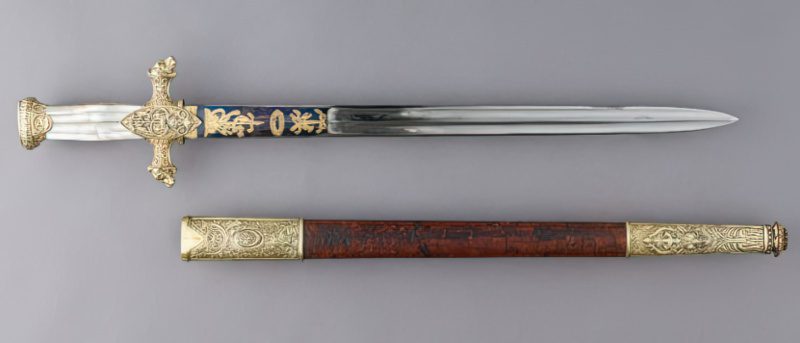
The strongest characteristic of the Hunting Sword is definitely its grand and very ornate look. It has decorations and writings all over, as well as many types of interesting-looking shapes and metals. This is because it was used firstly as a ceremonial and decorative piece and second as a hunting weapon.
Blade
Straight Hunting Swords
- Straight – The Hunting Sword has a straight blade which renders it much more powerful for thrusting and stabbing attacks. A straight sword is perfect for thrusting into the heart of a wounded animal to finish it off.
- Double-Edged – This sword is sharp on either side of the blade.
Curved Hunting Swords
- Curved – There are also some examples of a curved Hunting Sword that closely resemble a Hanger sword or a saber, but these were most likely for decorative purposes rather than hunting.
- Single-Edged – If it is curved, it will be sharpened just on one side except for the blade’s tip, which might have a false edge.
- Decorations – The Hunting Sword’s blade has many decorations on it, like family heirlooms, the name of the wielder, animals, etc.
- Fuller – A beveled groove throughout the length of the blade to make it lighter and stiffer
- Length – The blade of the Hunting Sword is usually 15 to 21 inches long (40 to 50 cm).
Guard
- Many shapes – The Hunting Sword tends to have all sorts and shapes of guards. It can usually be seen with a crucifix or S-shaped quillons.
- Thin Knuckle Bow – Some swords feature a very thin knuckle bow that helps out protect the user’s hand.
- Decorated – Hunting Swords used for decorative purposes had many different shapes and decorative designs on their guards.
Handle
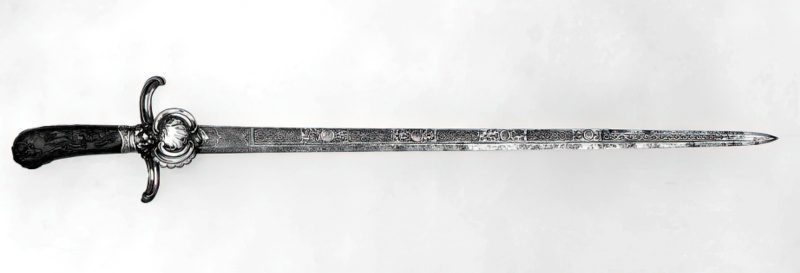
- Straight – As a thrusting weapon meant to finish off wounded laying beasts, it would benefit from a straight handle.
- Slightly Curved – There are also some instances of it having a slightly curved handle
- Highly Decorated – Hunting swords often had lots of decorations added to the handle, which sometimes rendered the grip very weak.
- Length – The most usual handle length for the Hunting sword is around 3.5 inches (9 cm).
Pommel
- Highly Decorated – The pommel of Hunting Swords often had many different shapes and sizes that are highly decorative and have no actual help in the grip of the user’s hand.
Scabbard

- Highly Decorated – The most decorated piece of the Hunting Sword is the scabbard since it would hang off the nobility’s belts and be seen by everyone.
- Leather – If it were an early Hunting Sword used primarily for hunting, it would have a leather sheath and scabbard to make it easier to carry around.
Size & Length
- Length – The overall length of the Hunting Sword is around 18 to 31 inches long (45 to 80 cm).
- Width – The widest point is either the handle or the neck of the blade, which is around 1.5 inches wide (4 cm).
Weight
- Mass – The Hunting Sword typically weighed between 0.9 to 1.7 lbs (400 to 800 grams), but there are some that are highly decorated swords that can reach even 3.8 lbs (1.7 kg)
Use of the Hunting Sword
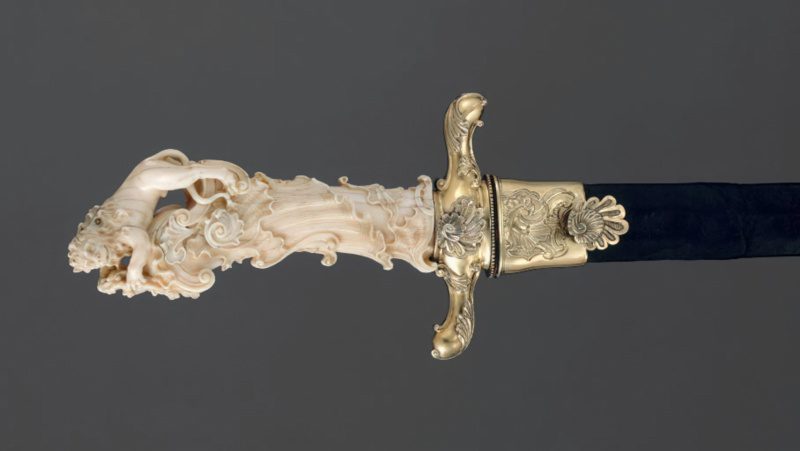
The best way to use the Hunting Sword is one-handed, thanks to its lightweight and small handle. It is a fairly short sword which renders it very appropriate for one-handed slashes or thrusts. Sometimes it can be double or single-edged, but the tip would still be sharpened to be used for either striking motion.
Hunting
As you can imagine, the main use of the Hunting Sword was for hunting purposes, hence the name. These smallswords were carried around by wolf hunters, boar hunters, deer hunters, and even rabbit hunters in the medieval ages. They typically did not have any types of decorations on them and were made simply for hunting uses.
The best use for them is as a backup weapon, or most of the time, just finishing off a wounded beast injured by a bow or a spear. Hunting Swords came in handy in actual hunting, but they couldn’t butcher as the hunting knife could.
With time, the prestige of hunting grew, and the nobility used either the Boar Sword or a spear combined with this smaller Hunting Sword.
Symbolic

Its other use, which became the primary one in the 17th century and especially in the later 18th century, is as a symbolic piece of weaponry. This transformed the Hunting Sword from a wild animal finisher to a gentlemen’s item that hung off belts or, better yet, sheathed in highly decorated scabbards.
The prestige that these nobility “hunters” had made them look for a way to show their status when off hunting. Grand-looking guards with quillons that wouldn’t help in hunting or sometimes even make it uncomfortable and goldened handles with different animal-shaped pommels were very common.
History of the Hunting Sword
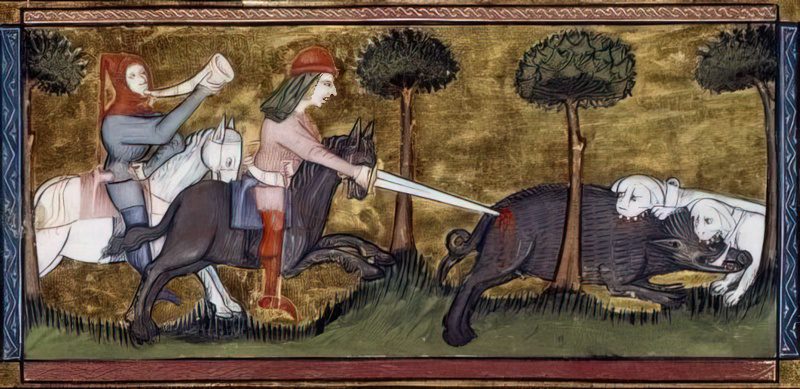
The Hunting Sword is a weapon that was primarily produced and made for surprise hunting. Some might say that it came after the Hanger Sword, while others might argue the opposite. Whatever the case may be, it was a tool with close to no decorations and a very simple design in the 12th century, but with time it grew to be a weapon of status.
It was a very short sword used as a backup weapon when going hunting and was primarily used to finish off a previously wounded animal. It wasn’t used as a primary weapon to fend off bears like the Boar sword was, for example.
European hunters have long used swords for hunting and to finish off many wild animals, but from the 17th to especially the 19th century, Hunting Swords were decorative pieces and primarily made for ceremonial use or symbolism.
These not-so-much Hunting Swords clearly have no indication that they were meant to be used for hunting. Hunting for the nobility was often just a prestigious event, and there was no indication that the would have used these decorative swords to finish off an animal. Instead, they showed the others on the hunt how rich and powerful they were.
Can you Hunt with a Hunting Sword Today?
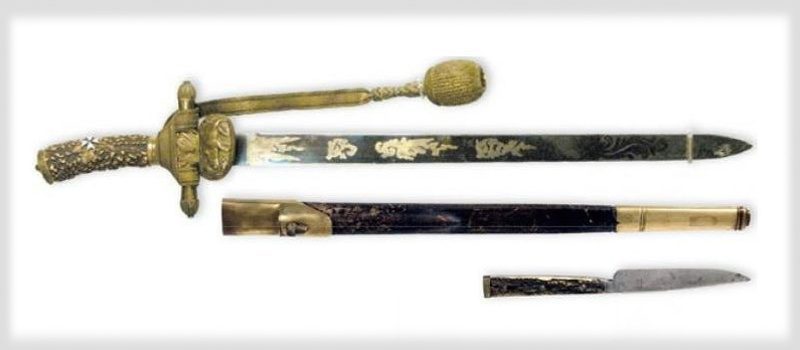
It was very prestigious and rewarding for the high nobility to show off their prowess in hunting, as it is today for some modern hunters. While rifles today are very effective in hunting, some hunters might wonder about the adrenaline and risk that comes with hunting with a sword.
Hunting with a sword today is allowed and legal, but only in some countries. There are laws regarding what animals can be hunted and in what period of the year. So having one carbon steel razor-sharp Hunting Sword might be handy if you plan on doing so.
Conclusion
Today the Hunting Sword might not be as popular as the Katana or Longsword, but it still plays a very interesting role in history as a highly used hunting weapon and as a status symbol. Having a highly decorated Hunting Sword is a welcome addition to any sword collection.
